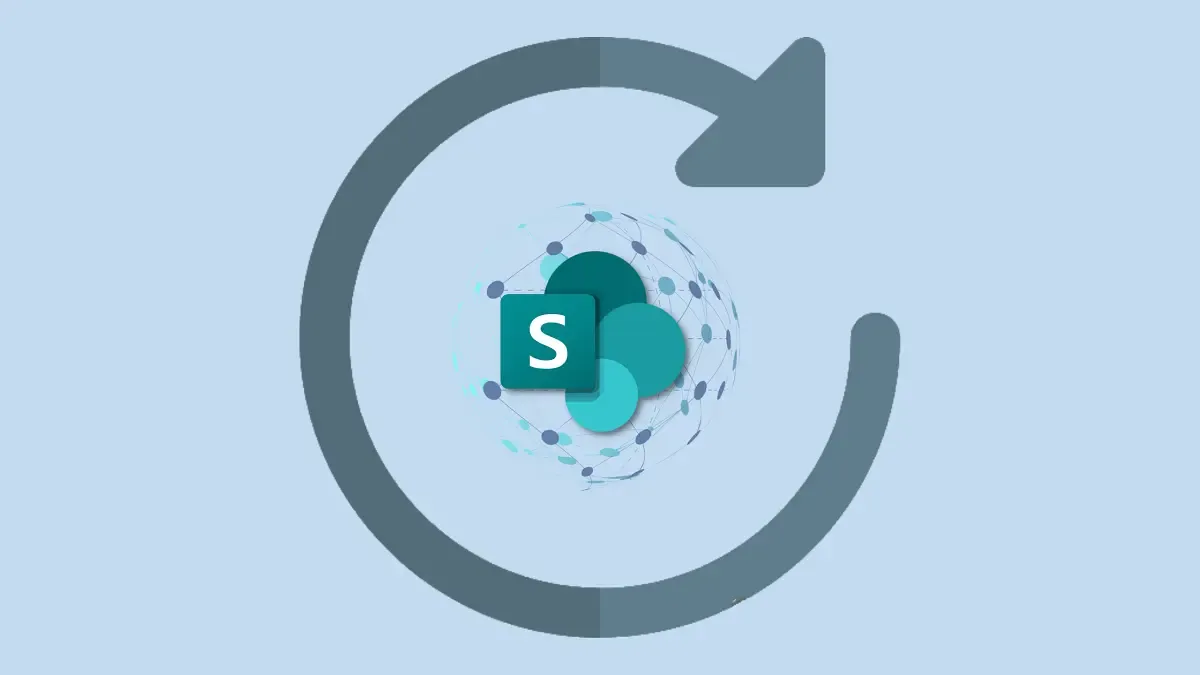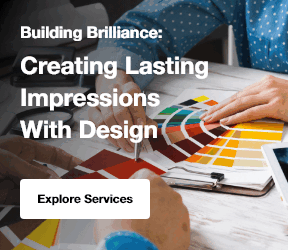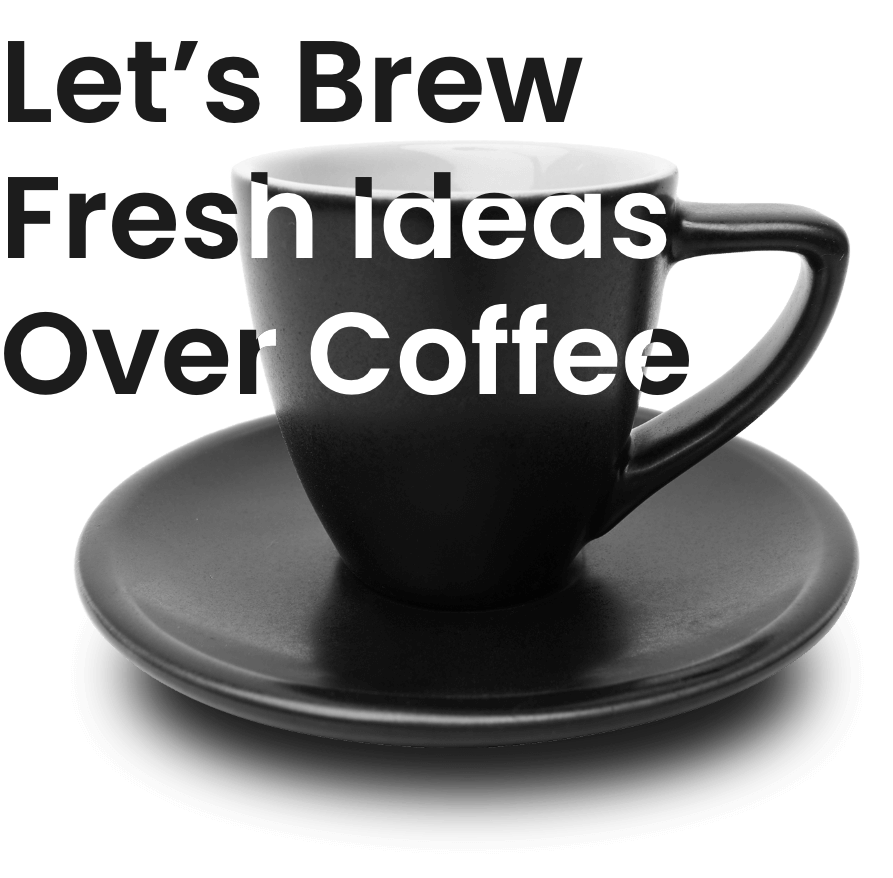The Offshore Technology Conference (OTC) is more than just a technical gathering; it's a global stage for the entire offshore energy industry. Every year, OTC brings together 70,000+ energy professionals from over 100 countries and more than 2,000 exhibitors, making it the world’s premier offshore energy event. At OTC 2025, this international audience converged to discuss pressing themes shaping the industry’s future: from the energy transition and emerging low-carbon solutions, to advances in AI and digital oilfields, to challenges like asset decommissioning and beyond. For Chief Marketing Officers (CMOs) and marketing leaders, OTC offers not only brand visibility but a chance to align with industry momentum and drive real business growth.
It’s a forum where the brightest minds share innovations across oil, gas, wind, hydrogen, and more in other words, an unmissable opportunity to network, learn, and position your company at the heart of industry dialogue. Marketing leaders who attend can engage decision-makers directly, glean insights on customer pain points, and even influence the narrative in a way that pure sales efforts often can’t. In short, OTC is where brand strategy meets industry strategy, making it essential for marketers aiming to fuel growth and credibility in the energy sector.
Energy Sector Sentiment in 2025
Walking the OTC 2025 show floor and listening to executive panels, one could gauge a clear industry sentiment: cautious optimism underpinned by discipline. After years of volatility, companies are laser-focused on capital discipline and efficiency doing more with less. As Dr. Claus Reimers of Akselos noted, “today’s technology, leveraging digital twins, real-time data and AI, allows operators to do more with less and ensure cash flow, value capture and margin capture in tough economic environments with limited resources”.
This mantra of “do more with less” reflects how operators are prioritizing ROI and operational value; massive projects must justify themselves financially, and $100-million wells demand careful investment decisions. The data integration challenge was another recurring theme. In a keynote panel, experts stressed that breaking down data silos is critical to unlocking digital transformation. “No one likes to talk about data,” said Bain & Co.’s Jim Claunch, “but data is at the core [of digital transformation and AI]”.
In 2025, oil and gas agency know that harnessing data across formerly isolated departments is key to driving efficiency and smart automation. Finally, an ESG (Environmental, Social, Governance) focus permeated the conversation. Even as companies pursue operational excellence, they face “increasing demands for emissions control and sustainable performance”. Industry leaders at OTC spoke about balancing growth with climate goals; for example, highlighting innovations that reduce emissions, strengthen asset performance, and support broader energy transition goals.
Marketing implication
In this environment, messaging must hit a very targeted sweet spot. Marketers need to highlight tangible value, speak to how your solution boosts productivity, saves costs, or improves safety; and show operational alignment with customer needs (e.g., integration-friendly tech, proven ROI). At the same time, weave in the sustainability angle credibly: demonstrate how your offering helps clients meet emissions targets or corporate ESG commitments. The takeaway is that in 2025, an oilfield product pitch is no longer just about features; it’s about value and values. Effective digital marketing services at OTC 2025 framed solutions as enablers of both profit and progress, resonating with an audience under pressure to deliver results responsibly, while ensuring alignment with Digital Brand Guidelines to maintain consistency across messaging and platforms.
Effective digital marketing services at OTC 2025 framed solutions as enablers of both profit and progress, resonating with an audience under pressure to deliver results responsibly, while ensuring alignment with Inbound vs. Outbound Sales strategy, to maintain consistency across messaging and platforms.
The Marketing Shift: From Spec Sheets to Storytelling

One striking lesson from OTC 2025 was the success of companies that shifted from dry specification sheets to narrative-based marketing. In an industry famous for technical detail, leading exhibitors stood out by telling stories; positioning their technologies within real-world challenges and outcomes; rather than just listing specs and statistics. Even the conference itself underscored the power of storytelling: a keynote session featured deep-sea diver Chris Lemons recounting his harrowing survival story, which “captured global audiences... inspiring both a documentary and a major motion picture”. This human tale riveted the OTC audience and drove home lessons about resilience and safety in a way no technical paper could.
Exhibitors took a similar approach. Many leading firms used videos, animations, and case study narratives to bring their solutions to life. Instead of simply touting an “industry-leading valve” or a spec sheet of measurements, booths showcased short films of that valve in action on an offshore platform, or interactive demos walking visitors through a day-in-the-life of a customer using their product. The emphasis was on benefits over features; a trend reflected in marketing best practices. As one trade show guide suggests, “Speak directly to their pain points... Instead of ‘Industry-leading solutions,’ try ‘Cut your production costs by 25% here’s how.’”.
This kind of messaging, focused on the customer’s story (e.g. reducing downtime or improving safety) rather than the product’s specs, resonated strongly at OTC.. Several exhibitors shared mini case studies; for instance, how their digital tool helped a client avoid an offshore shutdown, or how a new material extended a well’s life and reduced environmental risk. These narratives made their offerings memorable. Visual content amplified the effect: big screens looped video clips of demos and customer testimonials, ensuring that passersby could see the story unfold. The result? Booths that embraced storytelling had attendees lingering longer and engaging in deeper conversations.
Marketers should note that even in a tech-driven expo like OTC, emotion and narrative can differentiate your brand. As one could see in Houston, the companies that moved beyond technical data to craft a compelling narrative; aligning their message with audience aspirations and challenges; left a lasting impression (and likely left with more leads). In today’s competitive landscape, businesses looking to enhance their digital marketing efforts and stand out should consider leveraging web design & development services. These services help companies create compelling online experiences that are not only visually appealing but also optimized for engagement and conversion.
1. Digital Experience in the Buyer Journey
OTC 2025 also illustrated that the buyer journey no longer stops at the booth; the best marketers orchestrated a blended physical and digital experience for attendees. On the exhibition floor, many booths featured digital engagement tools to draw in and educate visitors. Simple tactics like QR codes were ubiquitous; a quick scan would pull up detailed product info or sign one up for a post-show webinar. Companies with complex equipment often had 3D product viewers or augmented reality (AR) demos, allowing prospects to visualize large offshore tools in operation via tablets or AR glasses. These interactive elements weren’t just tech gimmicks; they served to explain complex offerings in an accessible way and kept visitors at the booth longer. In fact, research shows attendees remember interactive booths 30% more than static displays, so interactivity is now a “must-have” for engagement.
Crucially, savvy marketers ensured a consistent experience across physical and digital touchpoints. This meant that what an attendee saw and learned at the booth seamlessly continued after the show. Savvy firms prepared post-event digital content; dedicated microsites or interactive catalogs; to nurture leads who showed interest. An attendee who engaged with an AR demo could later be directed to a microsite with deeper technical resources, videos, and ROI calculators specific to that product line. For instance, Ericsson’s booth in 2025 highlighted their private 5G solutions with live demos, and online they offered an interactive recap showing how those demos enable use cases from AI to VR to digital twins.
Similarly, Cadmatic, a software exhibitor, invited OTC visitors to discuss their digital twin solution on-site and complemented it with online resources on improving maintenance and operations. The key insight is that the buyer’s journey is hybrid: after the initial face-to-face contact, prospects expect to continue their research digitally at their own pace. Companies that provided an easy bridge; e.g. a QR code to “learn more” or a follow-up email linking to an interactive brochure; reaped the benefits of higher engagement. They effectively extended the OTC experience into a digital one. Marketing leaders should ensure that events like OTC are not one-off encounters but part of a broader omnichannel journey.
Usman Khalid, CEO of Centric, says “The physical booth should be just one chapter; what follows (web content, on-demand demos, follow-up calls) should feel like a natural continuation of the conversation started at OTC. By planning for this continuity, you turn fleeting booth visits into sustained engagement that drives buyers down the funnel.” This is where digital transformation and web design & development services become essential, ensuring that every stage of the buyer’s journey is seamlessly connected.
3. AI, Data, and Dashboards: Cutting Through the Hype
If one buzzword dominated OTC 2025, it was AI. From the conference sessions to exhibitor pitches, everyone was talking about artificial intelligence, machine learning, and data analytics. But the real lesson for marketers was to go beyond buzzwords and show concrete value. On the technology side, industry leaders were candid that simply touting “AI” isn’t enough. Vicki Hollub, CEO of Oxy, pointed out that in offshore exploration, “these are $100 million dollar wells... that warrants a lot of investment in AI to make it understandable”. In other words, AI is viewed as a tool to solve expensive problems; increasing success rates and preventing failures.
The data underpinning AI was a hot topic too: without quality data and integration, AI loses its impact. This aligns with Jim Claunch’s remark that data is “at the core” of any digital initiative. The sentiment at OTC was that we’re still early in the AI journey and many companies are “playing catchup”; a recognition that while hype is high, real implementation is just ramping up. AI requires building blocks; and the building blocks are well structured “labeled data” with detailed annotations for AI to learn and make sense of it all.
For marketing leaders, the takeaway is to start investing in Digital Asset Management, Customer Data Platforms and Content Systems; to have the right labeled data to train future AI initiatives. If operations get ahead; it will be only a matter of time when C-Suite will start asking for AI initiatives from Marketing departments.
Smarter Conference Strategy for Marketers
To capitalize on major events like OTC, a smarter conference strategy is essential. Winning marketing teams treated OTC 2025 not as a 4-day sprint, but as a months-long campaign with pre, during, and post-event phases. Here’s a breakdown of best practices observed:
1. Pre-Event: Build Buzz and Targeted Outreach
The work starts well before the doors open in Houston. Savvy marketers spent the weeks (even months) ahead of OTC building their contact lists, targeting key prospects, and warming up the audience. Why? Because simply showing up and hoping for foot traffic is no longer enough; companies that execute robust pre-show promotion see significantly higher booth engagement. In practice, this means leveraging digital channels: personal invites via LinkedIn to top customers and leads (“Let’s meet at OTC we have something exciting to show you”); can be easily done using LinkedIn Automation, email campaigns to your subscriber list announcing your booth number and what you’ll be demoing, and even targeted ads or event landing pages.
Importantly, sales and marketing worked hand-in-hand; sales teams reached out to known contacts to set up one-on-one meetings or dinners during OTC, ensuring that key prospects had a reason to find their booth. By the time OTC started, these companies had already built anticipation and appointments, rather than relying on luck. The tone of pre-event outreach at OTC 2025 was value-driven: instead of generic “Visit us at Booth X” messages, the best outreach highlighted what attendees would learn or gain by engaging (for example, hinting at a new product launch or offering a free consultation at the booth). This kind of thoughtful preparation paid off in a crowded expo hall. Utilizing product & brand launch services helped refine this approach, ensuring messaging was compelling and impactful.
2. During Event: Engage, Educate, and Capture Leads
Once OTC was underway, marketing teams switched to execution mode on the floor. The goal during the event was twofold: maximize engagement at the booth and capture high-quality leads for follow-up. Booth staff were not just friendly, but strategically trained to identify and engage the right people; essentially acting like field sales reps. Techniques like booth gamification (e.g. a digital quiz with a small prize) or live demonstrations scheduled each hour helped draw crowds. Behind the scenes, many teams used lead capture apps to scan badges or QR codes, instantly tagging prospects with notes about their needs.
This real-time data entry is critical; it ensures no promising conversation slips through the cracks. Notably, OTC 2025 exhibitors placed a big emphasis on qualifying leads; distinguishing between a casual swag-seeker and a potential buyer with a defined problem. By asking a few pointed questions with the help of small apps, booth promoters could tailor the conversation and collect info that would later feed into lead scoring. Marketers who excelled also coordinated beyond the booth: they sent team members to roam the conference, attend technical sessions, and post live updates on social media (extending the reach of their OTC presence to those not at the booth). All of these efforts served one aim; to generate meaningful engagements. As a result, by the end of the conference, these companies didn’t just have a fishbowl of business cards; they had a database of well-qualified leads segmented by interest and priority.
Explore Our Digital Transformation Services!
3. Post-Event: Prompt Follow-Up and Nurturing
The real test of trade show ROI comes after everyone packs up the booth. OTC 2025 reinforced how essential the post-event follow-up is; and how often it’s botched if not planned. Shockingly, about 80% of trade show leads are never followed up on at all, a statistic that should haunt any marketing leader. The stand-out performers from OTC did not let this happen. They treated the days immediately following the conference as a critical window. Best practice is to follow up with new contacts within 48 hours while the event is still fresh in their minds. At OTC 2025, many companies' follow-up included tailored content; for example, a slide deck on the topic the attendee asked about, or a link to a case study relevant to their region or sector.
CRM integration was key: all the leads from the badge scans and forms were imported into CRM systems (like Salesforce), tagged as “OTC 2025 leads,” and routed to either sales or marketing nurture streams based on readiness. Marketing teams set up lead scoring models to prioritize hot leads (e.g. someone who requested a quote or demo) for immediate sales calls, versus colder leads who might enter an email drip campaign.
The follow-up strategy often included a mix of email sequences, LinkedIn connection requests from the reps, and a post-event webinar to provide additional value (e.g. “OTC recap: Trends and solutions you may have missed” featuring their experts). By systematically nurturing the contacts gathered, the best companies were able to convert a significant portion of OTC interactions into actual opportunities and deals. The lesson is simple: the ROI of attending a show like OTC isn’t realized until you close the loop with diligent post-event action. Marketing leaders should have that post-show plan in place before the event even starts, so no lead falls through the cracks when it’s over.
How Marketing Can Lead the Energy Transition?

A recurring theme at OTC 2025 was the industry’s commitment to the energy transition; and this presents a unique leadership opportunity for marketing. As oil and gas companies navigate shifting towards sustainability, marketers are increasingly the storytellers and translators of this journey. OTC showcased numerous examples of ESG storytelling and purpose-driven content.
Great marketing can bridge the gap between complex technical work and public perception. Internally at OTC, you could see companies like Oxford Flow linking their product benefits to climate goals: “targeted innovations can help offshore operators reduce emissions... and support broader energy transition goals”. Externally, marketers need to craft messages that resonate with both industry stakeholders and the public or investors who demand progress on sustainability. This means emphasizing purpose (the “why”) as much as the “what.” If your company is cutting flaring or digitizing operations to lower the carbon footprint, those facts should be front-and-center in your content, backed by data and stories.
Crucially, marketing can simplify technical complexity into engaging, relatable content. The energy transition involves a lot of jargon CCUS, hydrogen electrolyzers, floating wind turbines but marketers can humanize these through storytelling. Think of highlighting a human-centric angle, as one industry expert at OTC noted that the path forward demands “a fundamentally more human-centric approach” even as we innovate technologically. This could mean spotlighting the engineers or communities benefiting from a project, or using analogies to make new energy tech understandable. By crafting compelling narratives around the company’s role in the energy transition, marketing leaders inspire employees, educate customers, and build public trust.
To craft effective digital strategies, it's essential to align digital marketing efforts with the company’s sustainability narrative, ensuring consistency across all platforms. By utilizing SEO services and content creation, companies can amplify their ESG stories, connecting with their target audiences while supporting the broader energy transition goals.
At OTC 2025, it became evident that companies leading in ESG communication enjoy a halo effect; their booths were seen as forward-thinking and their brands as future-proof. Whether through interactive infographics showing emissions reductions, videos of renewable energy pilots, or panels where their executives spoke about purpose and innovation, these companies set themselves apart. Marketing can thus lead the energy transition conversation by ensuring that every technical achievement is also a story about progress. A strong product launch solution ensures that companies are equipped to effectively present their sustainable innovations, solidifying their position as leaders in the energy transition conversation.
In doing so, oil and gas marketing agency help shape not just brand perception, but the very narrative of how the oil and gas industry evolves in a changing world.
Conclusion
OTC 2025 was a microcosm of a changing energy industry; and a barometer for marketing maturity in the sector. The conference made one thing clear: companies that thrive are those whose marketing strategies evolve in step with industry trends. The old playbook of specs and spam is fading. In its place, a new playbook emerged at OTC: lead with narrative, create a blended digital+physical experience, and anchor every claim in data and tangible value. For CMOs in oil and gas, the lessons from OTC 2025 point to a more strategic role for marketing. It’s no longer just about promoting the brand at a trade show; it’s about shaping the dialogue.
Whether it’s highlighting how your tech enables both profits and sustainability, or demonstrating thought leadership in digital transformation. By embracing storytelling over feature-dumping, delivering consistent engagements on and offline, and using data-driven content to prove impact, marketing leaders can significantly elevate their company’s presence and influence.
In a competitive and rapidly evolving environment, those who adapt will stand out. OTC 2025 showed that audiences respond when you speak to their needs and aspirations: the operator trying to maximize output safely, the executive balancing the budget and carbon targets, the engineer seeking the next breakthrough. As we move beyond 2025, the energy landscape will keep shifting; and marketing must continue to be agile and innovative. The companies whose booths were buzzing at OTC were the ones telling the most compelling stories and offering the most interactive value. In essence, they weren’t just marketing at the conference; they were helping lead the industry forward.







